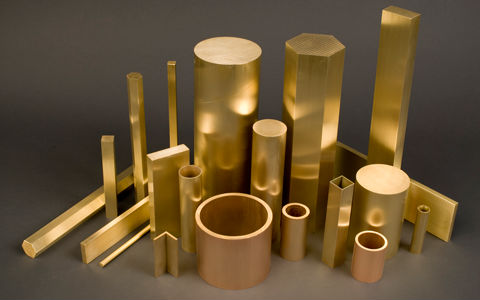Metal of Brass
 Brass is an alloy of copper and zinc; the proportions of zinc and copper can be varied to create a range of brasses with varying properties.
Brass is an alloy of copper and zinc; the proportions of zinc and copper can be varied to create a range of brasses with varying properties.
In comparison, bronze is principally an alloy of copper and tin. Bronze does not necessarily contain tin, and a variety of alloys of copper, including alloys with arsenic, phosphorus, aluminium, manganese, and silicon, are commonly termed "bronze". The term is applied to a variety of brasses and the distinction is largely historical.
Brass is a substitution alloy. It is used for decoration for its bright gold-like appearance; for applications where low friction is required such as locks, gears, bearings, doorknobs, ammunition, and valves; for plumbing and electrical applications; and extensively in musical instruments such as horns and bells for its acoustic properties.
It is also used in zippers. Because it is softer than most other metals in general use, brass is often used in situations where it is important that sparks not be struck, as in fittings and tools around explosive gases.
Brass has higher malleability than bronze or zinc. The relatively low melting point of brass (900 to 940 °C (1652 to 1724 °F), depending on composition) and its flow characteristics make it a relatively easy material to cast. By varying the proportions of copper and zinc, the properties of the brass can be changed, allowing hard and soft brasses. The density of brass is approximately .303 lb/cubic inch, 8400 to 8730 kilograms per cubic meter (equivalent to 8.4 to 8.73 grams per cubic centimeter).
Today almost 90% of all brass alloys are recycled. Because brass is not ferromagnetic, it can be separated from ferrous scrap by passing the scrap near a powerful magnet. Brass scrap is collected and transported to the foundry where it is melted and recast into billets. Billets are heated and extruded into the desired form and size.
Aluminium makes brass stronger and more corrosion resistant. Aluminium also causes a highly beneficial hard layer of aluminium oxide (Al2O3) to be formed on the surface that is thin, transparent and self-healing. Tin has a similar effect and finds its use especially in sea water applications (naval brasses). Combinations of iron, aluminium, silicon and manganese make brass wear and tear resistant.

